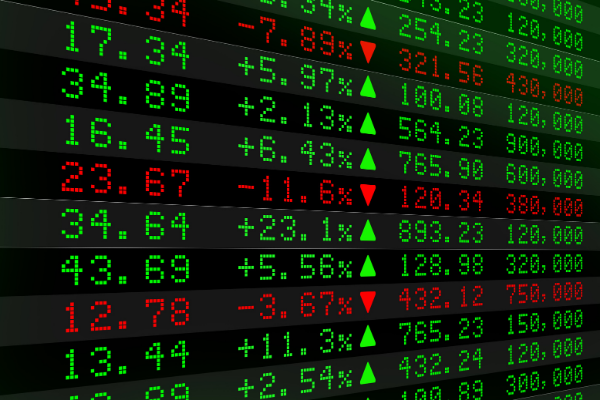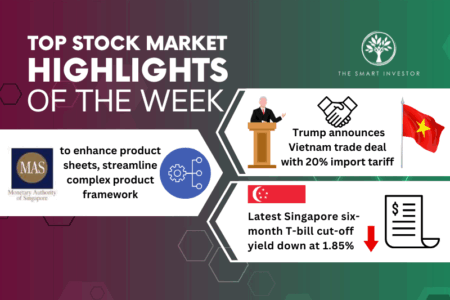As economies recover, so have stock valuations.
With investors feeling more ebullient, companies are also taking the chance to raise money at higher stock prices..
In the process, some companies have indicated their intention to seek a dual listing on a separate stock exchange.
A dual listing is defined as a company that lists its shares on more than one stock exchange.
The question arises as to whether such corporate actions benefit the company.
Should investors rejoice when such news is announced?
Or is there a negative aspect to seeking a dual listing?
Let’s look at the pros and cons of being listed on more than one exchange.
Increased recognition and a wider investor base
One clear benefit is the ability of the company to raise money in a different country or region.
For instance, if a company is only listed on the Singapore stock exchange (“SGX”), it usually attracts the attention of locals or, at best, regional investors.
By listing its shares on another exchange, the company can increase its exposure to a different market and also attract a wider base of investors.
Some may also argue that certain stock exchanges assign higher multiples for companies in specific industries such as technology, for instance.
Such recognition enables the company to garner a higher valuation for its shares, thereby allowing it to raise more funds than it would have.
Two examples of companies that conducted successful dual listings are space-optimisation specialist LHN Limited (SGX: 41O) (SEHK: 1730) and worker and student accommodation assets owner Centurion Corporation Limited (SGX: OU8) (SEHK: 6090).
LHN successfully listed on the Hong Kong Stock Exchange (“HKSE”) in July 2017 while Centurion completed its dual listing in December 2017.
China Everbright Water Limited (SGX: U9E) (SEHK: 0165), a water and wastewater treatment specialist, completed its dual listing on the HKSE in May 2019.
Higher compliance costs
While a dual listing helps a company to raise funds and gain wider recognition in the investor community, there are also disadvantages associated with this exercise.
One clear negative is the higher compliance costs that the company has to bear to ensure it adheres to reporting and regulatory requirements on the different exchanges.
Take Top Glove Corporation Berhad (SGX: BVA) (KLSE: 7113) for example.
The nitrile glove-maker, which is primary-listed on the Kuala Lumpur Stock Exchange (“KLSE”) in Malaysia, sought a secondary listing on the SGX back in June 2016.
The group has had to comply with listing requirements on both exchanges in the last five years, including the publishing of financial statements on both bourses and paying the required listing fees.
In October last year, Top Glove announced that it is evaluating a dual listing on the HKSE to “enlarge and diversify its investor base” and to provide for an “alternate fund-raising platform” for the group’s expansion.
This move enables the group to raise additional funds for rapid expansion, but the downside is that Top Glove needs to keep up with listing requirements and pay the associated expenses to stay listed on three different stock exchanges.
Performance of dual-listed companies
Investors may also be curious to know how dual-listed companies have performed.
Does the dual listing boost the share price and lift the financial and operating performance of the business?
We go back to both LHN and Centurion to take a look.
LHN traded at around S$0.21 back in July 2017 when it listed its shares on the HKSE. Today, shares are trading at around S$0.18.
China Everbright Water’s shares traded at around S$0.39 in May 2019, but have since declined to around S$0.24.
To use yet another data point, Centurion was trading around S$0.55 in December 2017 but has since fallen to S$0.33.
It’s safe to conclude from the above examples that dual listing does not constitute a reliable catalyst for the share price.
Instead, the performance of the company’s share price still hinges on its underlying financial performance post-dual-listing.
Get Smart: Invest based on the business
Recently, yet another dual listing aspirant has announced its intention to seek a dual listing.
Sarine Technologies Ltd (SGX: U77), a company that deals with the development and manufacture of mapping systems and technologies for the diamond industry, is applying for a dual listing on the Tel-Aviv Stock Exchange in Israel.
The rationale here is that Sarine is an Israeli company and that the group should naturally seek a dual listing in its home country.
Investors, however, need to assess Sarine’s business prospects to determine if it makes a great investment.
The dual listing may be a short-term positive, but ultimately, the success of your investment depends on how the underlying business performs.
Click HERE to get our latest and hottest articles in your email inbox today! Sign up for Smart Reads to get the latest investing news, analyses, and stories for FREE! Click HERE now.
Don’t forget to follow us on Facebook and Telegram for some of our latest free content!
Disclaimer: Royston Yang does not own shares in any of the companies mentioned.





